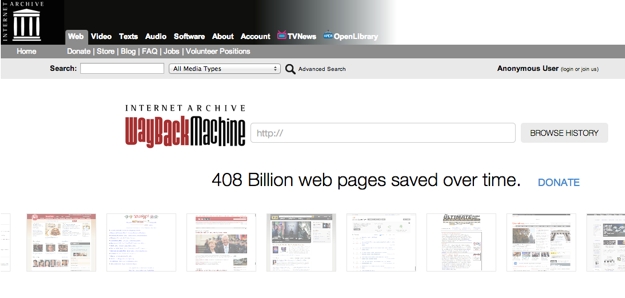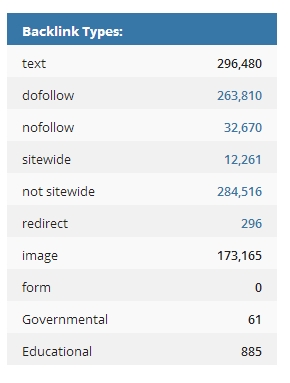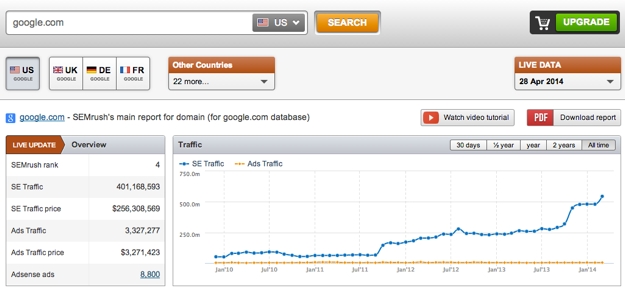Buyer Beware: Your CARFAX Guide to Choosing a Web Domain Name
May 2014
By Kimberly Barnes
After days of brainstorming and hours of searching, you’ve finally found the perfect domain for your business – and it’s even a “dot com.” Win!
Before you hit the checkout button, be forewarned: the domain you’re about to purchase may a cesspool of spam and other nasties. And don’t count on your registrar to tell you that in advance.
Unlike the purchase of a vehicle, used domains don’t come with a Carfax to tell you its mileage, provide insight into its value and essentially advise how well the previous owner treated his or her property. In fact, you won’t even necessarily be notified that the domain has a previous owner!
So, how do you determine whether your domain is pre-owned? And if so, how do you uncover any potential SEO risks?
Here’s your “Carfax” guide to buying a web domain name:
Start with WHOIS
When you register a domain for the first time, the information you furnish to the registrar is stored in a database. Except in the case of a private registration, that information is publicly available and accessible using a query called WHOIS. When used, WHOIS returns database information so that the site’s domain name, owner, creation date and expiration date, for example, can be viewed.
If you’re purchasing your domain from an auction or directly from another consumer, then your domain was obviously pre-owned. However, if you are utilizing a registrar like GoDaddy or NameCheap, then you will need the WHOIS from domaintools.com to pinpoint the domain’s birth date.
Enter your newfound domain into http://whois.domaintools.com WHOIS LOOKUP.

If the domain has had one or more previous owners, you will see a Registrar History, NS History (Name Server), IP History and Whois History. Next to Whois History is the domain’s “birthday.”

If no Whois or Registrar history is shown, then you are the first person to register this URL.
But don’t get your hopes up too fast. Even new, unused domains can carry a shoddy SEO history.
Provide some context with web selfies
In its WaybackMachine, web.archive.org provides website snapshots over time. These selfies can provide contextual understanding of how your website was used as far back as 1996. This is particularly useful for understanding anchor text and backlinks.

New or used, check for backlinks
Backlinks pass link juice to a website, which can positively or negatively affect a site’s
SEO metrics including
PageRank (PR),
Domain Authority (DA) and
Trust Flow. Even domains without a birthday may have inadvertently acquired links. This is particularly common if a website’s name is close to the spelling of another more popular site. So with each domain purchase, you may be inheriting a blank slate, a goldmine or a deathtrap.
As a starting place, OpenSiteExplorer.com or BulkDaChecker.com will provide a quick DA check. DA is Moz’s “best prediction for how a website will perform in search engine rankings.”
Many elements, including the domain’s age and its backlinks, are factored into determining DA. And, the higher the DA the more likely you will rank highly in Google SERP.
A DA of 1 (out of 100) usually suggests a site has done no link building. However, the only way to be certain is to investigate further with MajesticSEO.com (in both Fresh and Historic Indexes) or ahrefs.com – both websites offer free and paid subscription options.
At first glance, the information can be overwhelming. So, here are the tabs/pages you need to explore:
Anchor Text
The purpose of anchor text is to give readers clues about a link’s content. When a site has been spammed or intentionally implemented Black Hat SEO, the anchor text is usually a dead giveaway.
Irrelevant anchors
If the domain you’re interested in purchasing is cell-phone-provider-online.com, for example, “Versace shoes” anchor text does not make sense. If you happen to purchase this domain, you’ll want to disavow or manually request removal of these links.
Poker, porn, payday loan or prescription anchors
Usually bad company does not come alone – if you see one Viagra or Online Poker anchor text, you’ll see another. Also watch for unexpected women’s names like Lucinda and Lolita; this typically indicates pornography backlinks.
 Non-English anchors
Non-English anchors
Unless the site previously targeted non-English-speaking customers, you should not see any foreign anchor text.
Repetition of exact-match anchor
When a site acquires links naturally, it is rare to find repetition of the same anchor text over multiple sites. For example, if you sell desk chairs, one website may link to you from their content using your domain name, another will use “office chairs,” and a third may lead in customers with the word “website.” If the occurrence of a single anchor text over multiple sites stands out to you as appearing unnatural, then it likely is – and this may have been the result of old-school link building tactics that are
now being penalized.
Referring Domains
A referring domain is a site that links to your domain. On both MajesticSEO and ahrefs.com, referring domains are sorted in order by number of links for your convenience.
Unnatural distribution of links
As a general rule of thumb: if greater than 50 percent of your links come from less than 10 percent of your referring domains, then this is a red flag.
As an example, let’s say you have 5,000 total links. Of that 5,000, 3,000 come from a single domain, another 1,000 are from a second domain followed by one, two and three links from a series of other domains. This concentration of links from one or two domains may indicate the presence of a link network or site-wide links – two things that will position you for Google penalties.
Foreign top-level domains (TLD)
When in high volume, foreign TLDs like .ru, .br, and .fr will point to spam. You will likely want to disavow these domains.
Follow-to-nofollow ratio
A quick check of the follow-to-nofollow ratio (available from MajesticSEO and ahrefs dashboards) will help identify if your site has accumulated comment, forum or user-generated profile spam. A link portfolio of more than 50% nofollow links is worth additional investigation. In such a case, dig deeper into the actual nofollow links to determine their origin.


Check for Google penalty indicators
SEMRush is a favorite tool among many Internet marketers. It’s known primarily for its support of keyword research. However, with a little deductive reasoning, you can use those same tools to identify if a site has been penalized.
Here are the dates you’ll need from the exercises above:
From WHOIS:
- Use domain birthday (creation) as your starting point
- Note dates where there were changes in domain ownership
From the WaybackMachine:
- Note any redesigns or periods of maintenance
From Moz:
From the SEMRush.com home page, enter your domain. In the traffic viewer, select “2 years.”

A normal traffic pattern for a website will appear similar to sine wave with natural dips for seasonality and having an upward-and-to-the-right trend. If your two-year view does not show enough data to see this, expand to “All Time.”

Dips in organic traffic are expected when a site is down over along period for maintenance, for redesign or for change in ownership. If in addition to these natural changes you still a significant drop in organic traffic, Google may have penalized the site. And while there is no way to confirm the penalty without access to the site’s original Webmaster Tools, traffic patterns have historically proven the best litmus test – rapgenius.com is a
recent example.
Is the website safe?
Worst than penalties is malicious content. A site marked for hosting malware will have been blacklisted by search engines, Internet browsers and the like – and is therefore not a domain you should invest in. Use Google’s Safe Browsing to determine if your future domain has been sited for hosting malware in the last 90 days. To inspect, replace yahoo.com in the link below with your domain.
http://www.google.com/safebrowsing/diagnostic?site=yahoo.com
If you decide to take on a site with a soiled SEO history, get ready for many rounds of research, link removal requests and inclusion requests. Based on your findings, you’ll have to determine if it’s worth it. If it’s the domain of a lifetime, then maybe it is. But if not, there are many more domains out there, and with a little bit of time, you can find the right one for you.
Kimberly Barnes is a digital marketing specialist turned freelance writer born back when Apple was called “Apple Macintosh,” floppy disks were actually floppy, and #2 pencils were the best way to rewind unraveled cassette tapes. Most days you'll find her summoning her muse while drinking a non-coffee beverage in Starbucks.